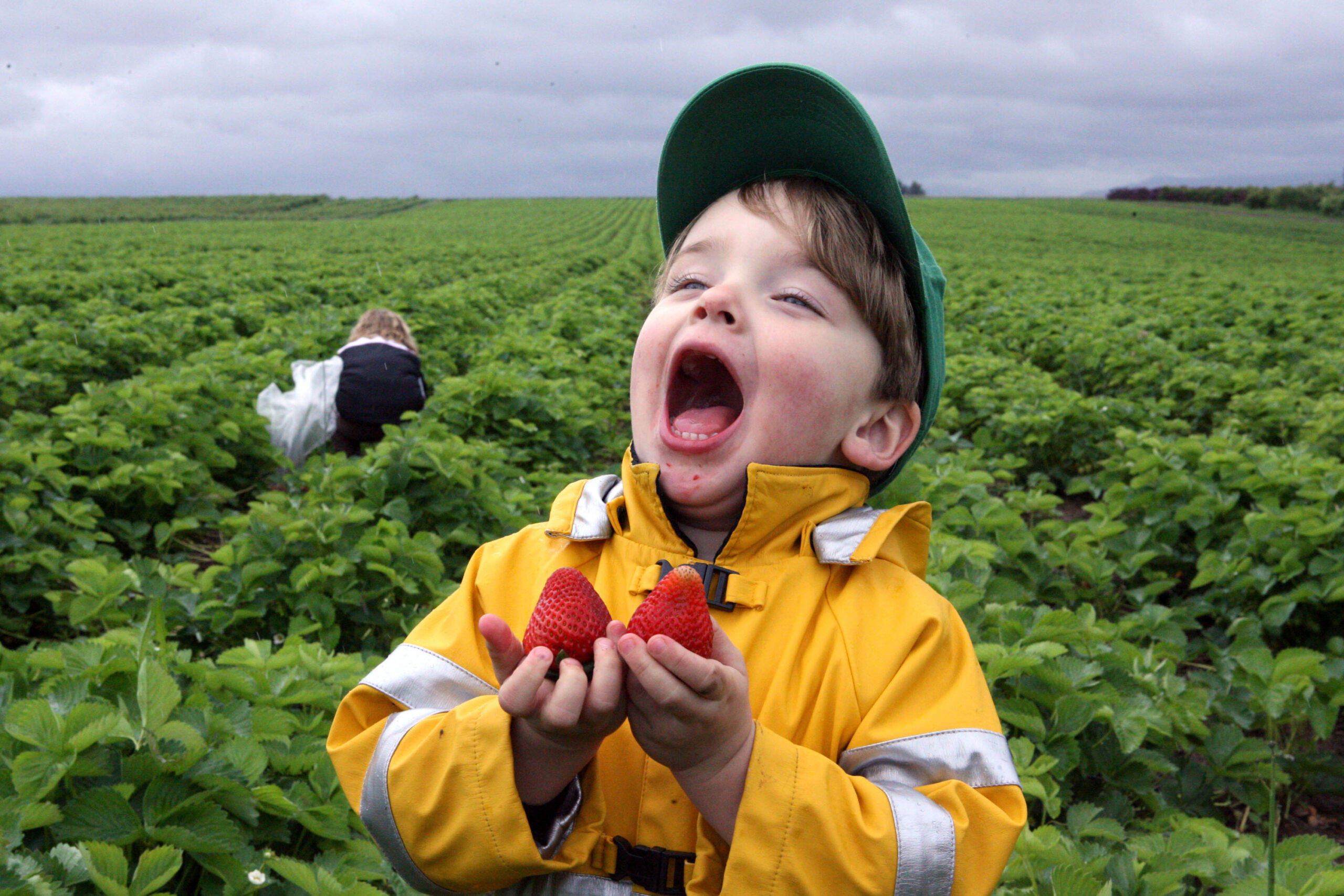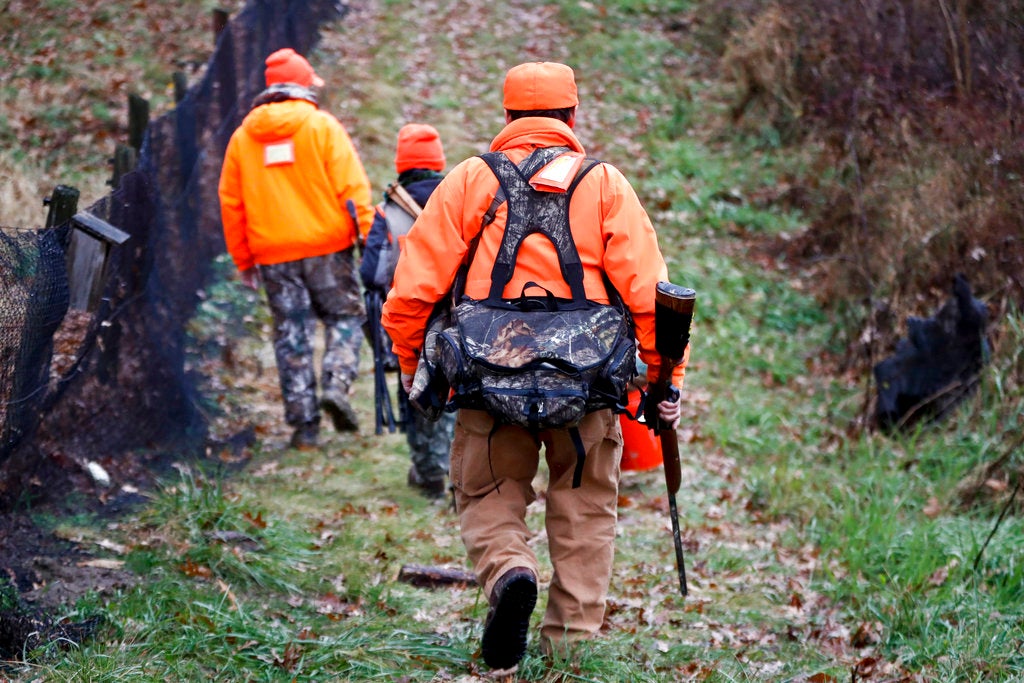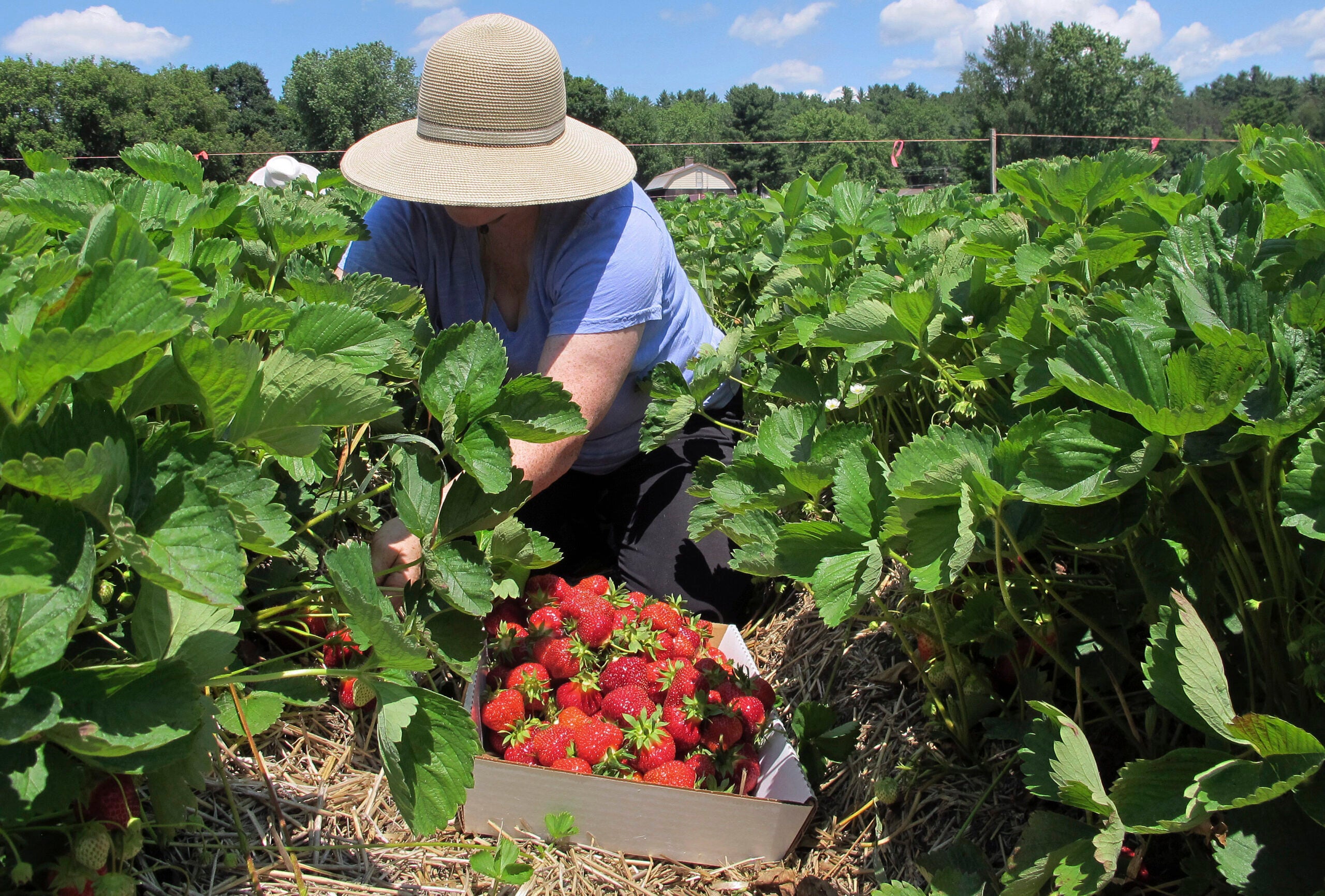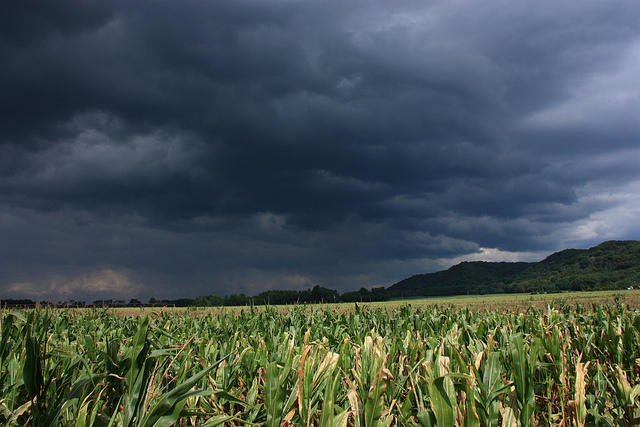Strawberry season is off to a late start this year for Craig Carpenter and his family-run business, Gracie’s Berries, in Cambridge.
The juicy red fruit that has swarms of pickers out in the fields in June is ripening a week to 10 days later than normal in Dane County, precipitated by a record-setting wet May, cooler temperatures and little sunshine.
Typically, the season starts in early June and runs anywhere from three to five weeks. The farther north you go, the later the season starts, Carpenter said.
Stay informed on the latest news
Sign up for WPR’s email newsletter.
For Carpenter and his family business, their season began June 8 and they are more than halfway through picking time.
Most strawberries grown in Wisconsin are Junebearing, said Carpenter, president of the Wisconsin Berry Growers Association. A couple other varietals will flower and produce fruit throughout the entire summer. At Gracie’s Berries, Carpenter grows galletta, flavorfest, cabot, cavendish and jewel strawberry varietals at his farm.
“It’s neat to go out in the field and eat the various strawberries,” he said. “You can actually taste the different flavor profiles in each one of the varietals.”
Jewel, an older varietal, is a favorite for making jams, Carpenter said.
Because of the weather this past year, Carpenter said this year’s crop yield will be down somewhat compared to when ideal conditions bring an inch of rain a week and plenty of sunshine. Wisconsin typically grows around 45,000 pounds of strawberries a year on up to 850 acres of land. The state ranks anywhere from fith to ninth nationally in terms of strawberry production, Carpenter said.
“(With) the cold weather and all the rain, the plants just aren’t as hardy or as healthy as what they would be under ideal conditions,” he said.
To take advantage of this year’s strawberry season, Craig advised visiting WiBerries.org, a new website with information about vegetable and berry yields across the state and a resource on where to find them.
Whether in rural or urban areas, you can expect to pay between $1.50 and $2.25 a pound, Craig said.
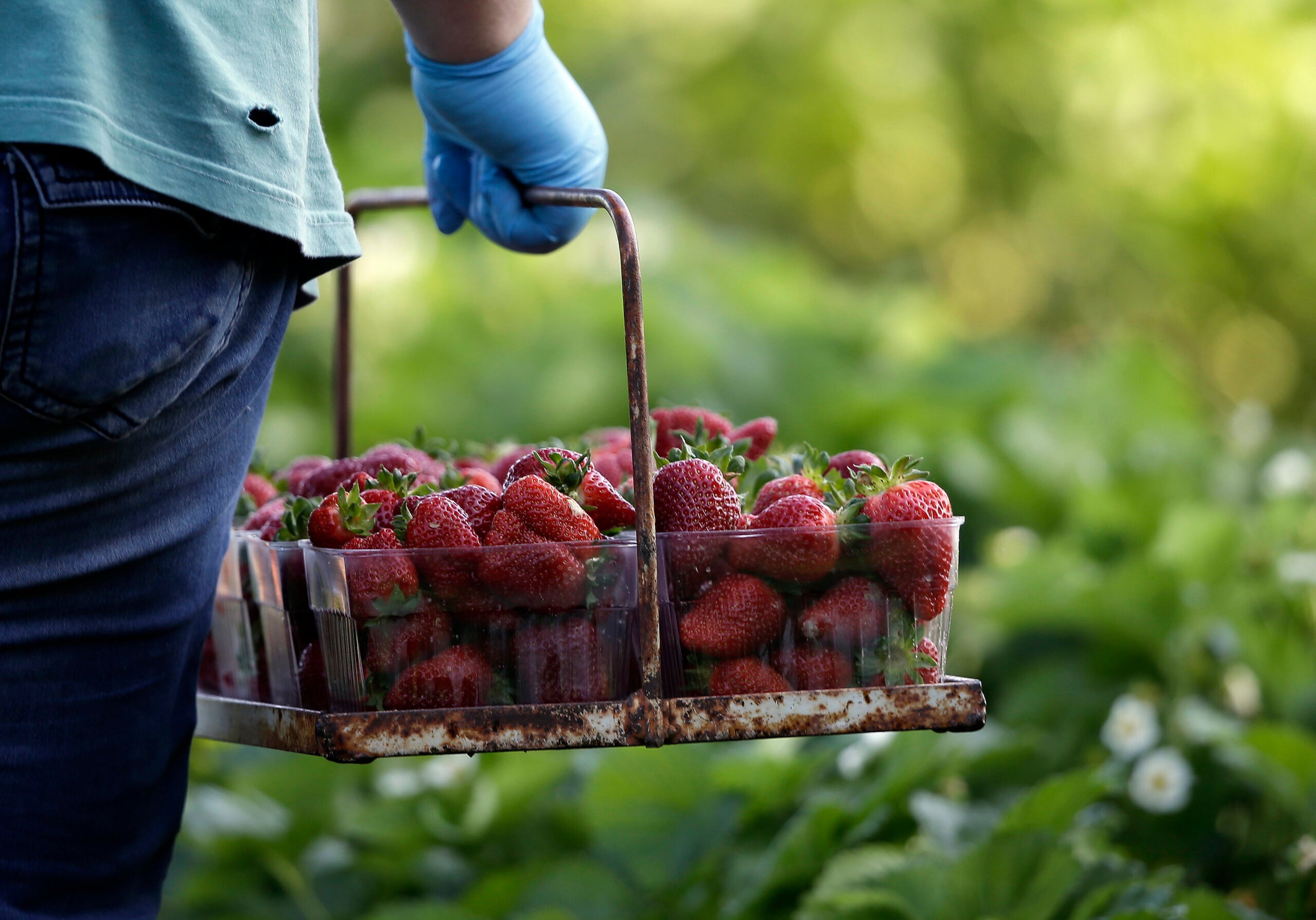
Craig’s daughter, Grace Carpenter, offers some tips for picking berries:
You don’t need the stem: Grace Carpenter said a good method is to grab the stem and berry between your index finger and thumb, cradling the fruit in your palm. Then gently pull the fruit to snap it off the stem.
Color indicators: If you turn a strawberry over and notice it has a white underside, that means the sun hasn’t gotten to it and it’s not fully ripened yet. It’ll eventually get there, but it’s not ready to pick. On the flip side, strawberries that are dark red are probably overripe and have likely lost some of their sugar content.
Bigger isn’t always better: “Contrary to popular belief, the biggest strawberries are not the best,” Grace Carpenter said. “A lot of the smaller- to medium-sized berries are usually the most flavorful and sweetest.”
Don’t wash them right away: You want to wash strawberries right before you’re about to eat them, Grace Carpenter said. Doing so beforehand means those berries will absorb the water and become mushy. Water also has a tendency to dilute the sweetness of the berry, Craig Carpenter said.
If you’re hoping to grow your own strawberries, Craig Carpenter said they like sandy soil. Put some organic material in the soil before planting them in the spring, and cover the berries if there’s frost forecasted so they don’t freeze. Depending on how you care for them, strawberry plants will last three to five years.
“The most important thing is probably to keep them watered,” Craig Carpenter said.
Wisconsin Public Radio, © Copyright 2024, Board of Regents of the University of Wisconsin System and Wisconsin Educational Communications Board.

